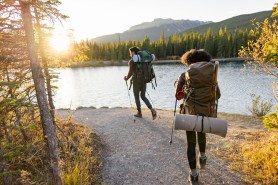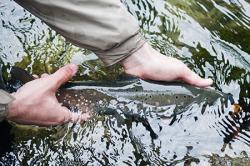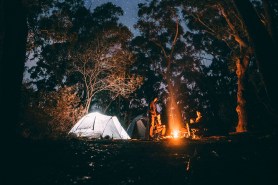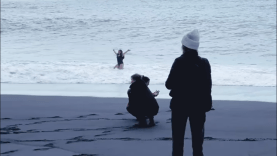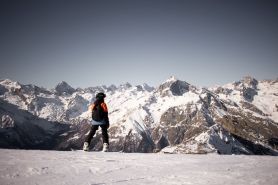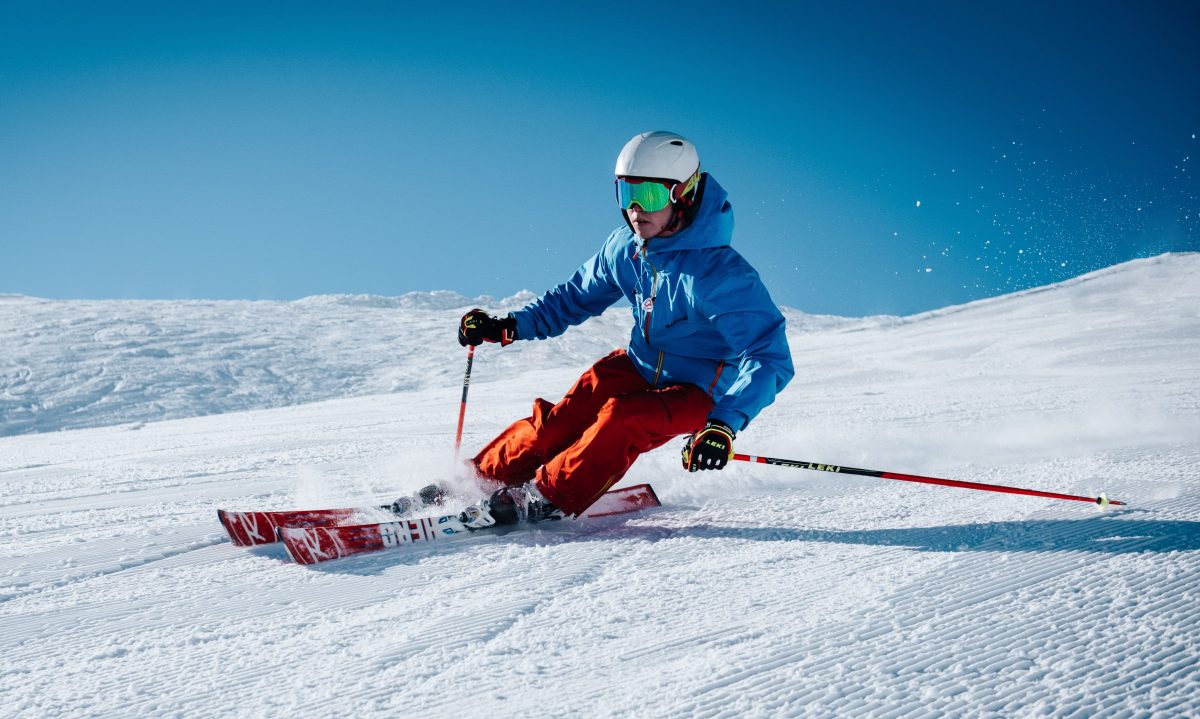

Skiing on ice can be frustrating and unnerving. In our perfect winter worlds, we’d all be skiing powder every day. But if you live on the east coast or it’s a bad snow pack year in the Rockies, chances are you’ll hit slippery slopes at some point during downhill adventures.
Videos by Outdoors with Bear Grylls
Icy runs come in different forms: Sometimes, the snow has melted and then re-frozen overnight so most of the trail is a slippery sheet. Other times, the snow melts wherever the sun hits it and then refreezes as soon as the light moves behind a tree, so late afternoon shadows hide patches of ice. Also very common is when a popular trail becomes skied out or wind-blown to reveal old hardpack underneath. Here, the trail may be alternating patches of powder and ice.
Ice makes for slippery conditions (obviously) and without the friction of fresh powder, it’s harder to turn, to balance, or have any sense of control underfoot. Oh, and it hurts a heckuva lot more when you fall.
But don’t let a little ice ruin your day on the mountain. Here’s how to ski ice like a pro:
Tune your skis
If you haven’t had your edges sharpened recently, take them to the shop before you hit the hill. Sharp edges will bite into the ice significantly better and help you maximize your grip when there isn’t much traction to hold onto.
Learn to spot powder
As we just explained, in most cases, only certain spots of the trail are icy while other more-protected or less-used pockets still have a light layer of powder. Try to read the snow as you go down. Icy patches look slick while small sprinkles of fresh powder will have more texture. (Hint: Switching your goggles to a low-light lens will seriously help you spot icy patches on cloudy days.) If you spot this, aim to skate over the icy spots and wait to make your turns when you reach the powder pockets where you have more friction to work with.
If it’s low visibility or you’re still learning to read the snow, you can use sounds and feel underfoot. When your skis are scraping or moving faster, you’re on ice. When they go quiet (or sound crunchy) and slow down or feel like they have more resistance underneath, you’re on some amount of powder and this is a safer place to turn.
Move more carefully
Your skis are more reactive to every movement when there’s no fresh powder underneath to cause friction. That means you need to be more precise with your movements: Don’t jerk suddenly — just like driving on ice, this small movement can catapult you further than you intended and can throw you off balance.
The ice will also want to send you racing down the hill, so try to control your speed during moments on decent snow so you don’t have to try to dig your edges into the ice to slow yourself down.
Don’t resist the slide
When you hit ice and your skis start to slide, your first instinct may be to panic. Resist, as this will just throw your balance off and increase your chances of a fall.
Instead, try to go with it and adjust your plans accordingly. If you’re partway through a turn and start to slide, let your skis take a larger turn radius. Make the turn part side slip, part edge control (more on that later). If it’s just a small patch, ride out the slide until you hit a little powder where it’ll be easier to turn and slow down.
Focus on the outside ski
When skiing, you’re always focusing weight on the outside ski (the one furthest away from the direction you’re turning). But when the slopes get icy and your skis want to slide away from your body, shifting your weight more over your outside foot lets you slide with your sticks (remember, don’t resist). This also allows you to better control your edges as the conditions change.
Set your stance up for balance control
A huge part of skiing ice is adjusting your balance in the moment in response to how your skis are sliding underneath you. Set yourself up for success by keeping your core braced, your knees bent, and your stance slightly wider than normal. All of this will keep your body lower to the ground, making you more stable and more in control when inevitable slips and slides happen.
Then, be ready to adjust your balance on the fly. An icy patch will put you in the backseat within a split-second, but you’ll want to pull your feet back underneath and raise your hips up to bring your shins against the front of your boots again. This puts you back in the driver’s seat where you have more control.
Perfect your side slip
Side slipping is one of the best skills you can develop for when you can’t actually ski the ice and you need to get safely past the rough patch. For one, it can get you out of a hairy situation if the slope is too icy or too steep to easily turn. But also, turning on ice is usually a combination of edge control and side slipping, so it’s crucial to understand in order to feel in control of the movement.
Side slipping is exactly as it sounds — carefully shifting your balance to release your uphill edges (the ones currently biting into the mountainside) in a controlled manner so that your skis slide (rather than ski) down perpendicular to the slope. Release slightly, slide down a bit, re-grip your edges to regain control, then repeat until you’re in a safe spot to turn.
In a perfect world you would just need to know our 7 Tips for Skiing Powder, but handling ice is part of being on the slopes.



